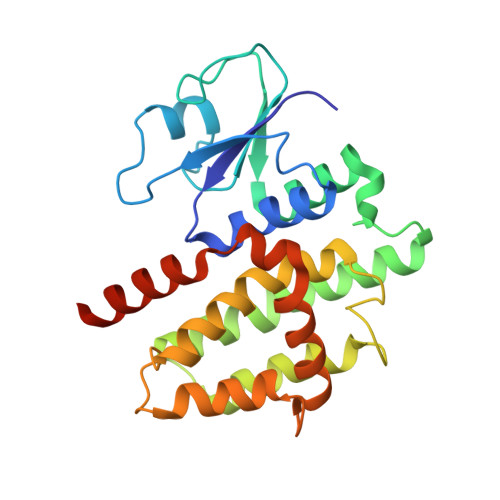Diversity of Omega Glutathione Transferases in mushroom-forming fungi revealed by phylogenetic, transcriptomic, biochemical and structural approaches.
Perrot, T., Schwartz, M., Deroy, A., Girardet, J.M., Kohler, A., Morel-Rouhier, M., Favier, F., Gelhaye, E., Didierjean, C.(2021) Fungal Genet Biol 148: 103506-103506
- PubMed: 33450403
- DOI: https://doi.org/10.1016/j.fgb.2020.103506
- Primary Citation of Related Structures:
6HJS, 6SR8, 6SR9, 6SRA, 6SRB - PubMed Abstract:
The Omega class of glutathione transferases (GSTs) forms a distinct class within the cytosolic GST superfamily because most of them possess a catalytic cysteine residue. The human GST Omega 1 isoform was first characterized twenty years ago, but it took years of work to clarify the roles of the human isoforms. Concerning the kingdom of fungi, little is known about the cellular functions of Omega glutathione transferases (GSTOs), although they are widely represented in some of these organisms. In this study, we re-assess the phylogeny and the classification of GSTOs based on 240 genomes of mushroom-forming fungi (Agaricomycetes). We observe that the number of GSTOs is not only extended in the order of Polyporales but also in other orders such as Boletales. Our analysis leads to a new classification in which the fungal GSTOs are divided into two Types A and B. The catalytic residue of Type-A is either cysteine or serine, while that of Type-B is cysteine. The present study focuses on Trametes versicolor GSTO isoforms that possess a catalytic cysteine residue. Transcriptomic data show that Type-A GSTOs are constitutive enzymes while Type-B are inducible ones. The crystallographic analysis reveals substantial structural differences between the two types while they have similar biochemical profiles in the tested conditions. Additionally, these enzymes have the ability to bind antioxidant molecules such as wood polyphenols in two possible binding sites as observed from X-ray structures. The multiplication of GSTOs could allow fungal organisms to adapt more easily to new environments.
- Université de Lorraine, INRAE, IAM, Nancy, France; Institute for Plant Cell Biology and Biotechnology, Heinrich Heine University, 40225 Düsseldorf, Germany.
Organizational Affiliation:

















